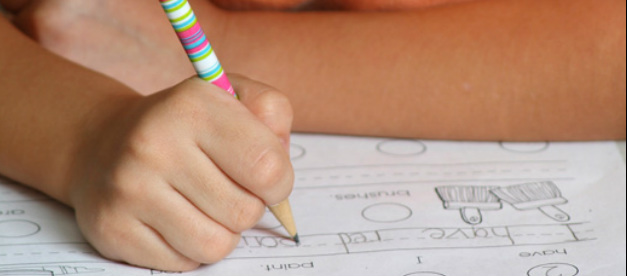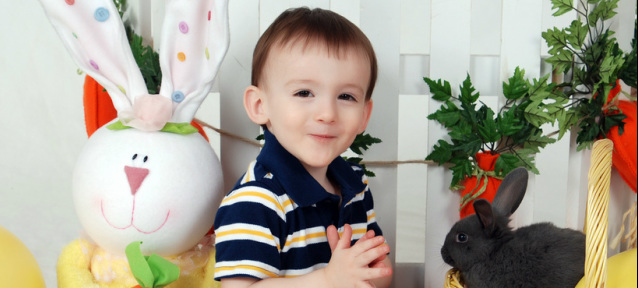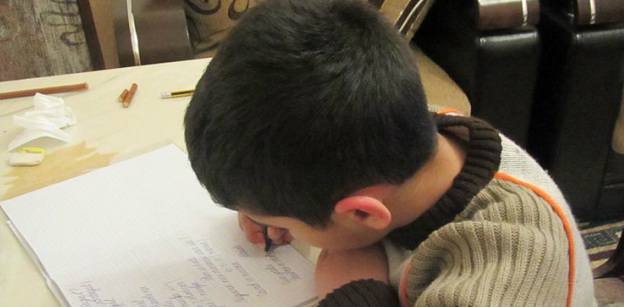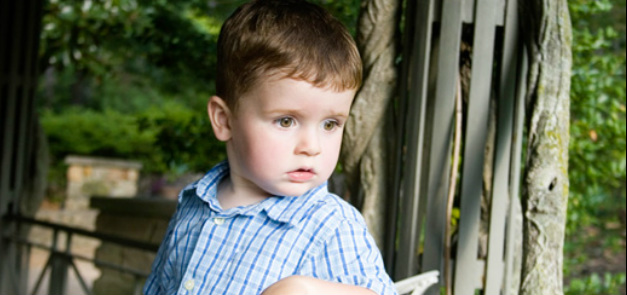|
Q: My teen daughter says I should just leave her alone to live her own life, but I am very concerned about where her life seems to be heading. She seems to have so little self-control. What can I do? Keep being there for them and ride out the storm Many young people have little willpower or self-control, mainly because they don’t see any reason for controlling themselves. They just like to let it all hang out; they don’t see why they shouldn’t. They are grappling with their myriad desires, feelings, and emotions, and it almost involuntarily spills out all over them, and all over others. Some young people can handle it better than others. And some don’t really see any reason for controlling themselves at all. They like to have fun, they like to be entertained, they like to be independent, they like to do their own thing. They want to be different, they don’t want to conform, and they don’t see what is wrong with being a little rebellious, being a little ornery. You’re just going to have to help them along the path. You’re going to have to show them the way, guide them, point them in the right direction, keep steering them back on the right track. Keep doing your part, and eventually they’ll come around and even start to see the wisdom in the things you say, in the advice and counsel you give. You just have to ride out the storm and keep being there to help them through this period when they sometimes seem more like an ugly caterpillar than the beautiful butterfly they are becoming. Typical teenhood Your daughter is a pretty typical teen. She loves to have fun and play around. She doesn’t like hard work just yet, but what teen does? The teens who are mature and serious about life are rare. Most are inclined to be closer to the opposite end of the scale: frivolous, foolish, fun-loving, lacking in discipline, lacking self-control. Yet deep inside they do crave guidance, instruction and counsel. Their pride won’t always let them receive it so gracefully, but they do know they need it. Your daughter knows she needs to be kept on the straight and narrow, and that she just can’t control herself. She knows she gives in too easily to things she shouldn’t. * Teens have many fears. Knowing that you know they are being hit with crazy thoughts is a comfort to them, because they don’t feel so odd or isolated. * Young people may be overly-demanding or intentionally annoying just to get your attention. Try not to overreact, but instead focus on trying to get them to understand the situation and why you are not able to meet their demands at the time. Appeal to them for their much needed help and cooperation. * Thrill-seeking teens like to shock or worry their parents by their wild actions. Sometimes they feel they don’t belong, so are seeking more attention from you or their peers. Love them for who they are, and let them know they don’t need dramatic extremes to get your attention. Excerpted from "Parenteening" by Derek and Michelle Brookes; © Aurora Productions.
0 Comments
Middle school students are getting assigned more and more homework all the time and it is important that they form solid study habits early on. Parents can help them form study skills by supporting and helping their child with homework and other assignments. This can be done by letting your child know that you consider their homework to be important - not just by making them do it, but by participating in the process and doing what you can to help. Set a Time Setting a regular time for studying is fundamental for homework success. If other commitments require you to be flexible, plan things a week at a time and keep up with the schedule. Write it down or make a chart for the refrigerator door. Help your child stick to the plan. Find a Place Give your child a place of his or her own to do their homework. Make sure there is good light, adequate space and all the materials they will need for projects. The place should be private enough that they can leave things undone and come back to them, without having to clean up the materials at the end of each homework period. Control the Environment Make sure there are no distractions. Turn off the television and prohibit telephone calls during homework time. Background music can be helpful, but favorite pop songs are not a good idea. Total isolation may not be a good idea as some children find comfort in the sounds of family life going on around them and actually study better when they are part of things. Listen to your child and observe their behavior at homework time. Try to strike the balance between what they want and what they need in a study environment. Join in the Fun! If at all possible, start and maintain a study project of your own. This will help your child see learning as a useful, positive thing with a purpose outside of school. And it will help them to see that school is just a small part of a life-long education over which they will someday have control. If your child sees you sit down to a book each night, they will feel partnership in their own efforts. Also, it will keep you accessible if they have questions or to monitor progress. Show Interest Show interest in their school life by asking your child what they are studying. Help them to accept the need to do the things they may not like and get the most out of the things they do enjoy. Find out about your child’s day, what made them happy or what troubled them. As much as possible, get involved in their homework without doing it for them. A little interest from mom and dad goes a long way to forming the good study and homework habits that will serve your child throughout their academic career. Reference: http://math-and-reading-help-for-kids.org/articles/Building_Good_Homework_Habits.html
I took my daughter, Helen (eight years old), and son, Brandon (five years old), to the Cloverleaf Mall in Hattiesburg to do a little shopping. As we drove up, we spotted a Peterbilt eighteen-wheeler parked with a big sign on it that said “Petting Zoo.” The kids jumped up in a rush and asked, “Daddy, Daddy. Can we go? Please. Please. Can we go?” “Sure,” I said, flipping them both a quarter before walking into Sears. They bolted away and I felt free to take my time looking for a scroll saw. A petting zoo consists of a portable fence erected in the mall with about six inches of sawdust and a hundred little furry baby animals of all kinds. Kids pay their money and stay in the enclosure enraptured with the squirmy little critters while their moms and dads shop. A few minutes later, I turned around and saw Helen walking along behind me. I was shocked to see she preferred the hardware department to the petting zoo. Plus, I thought the children had to wait till the parents came to pick them up. I bent down and asked what was wrong. She looked up at me with those giant limpid brown eyes and said sadly, “Well, Daddy, it cost fifty cents. So, I gave Brandon my quarter.” Then she said the most beautiful thing I ever heard. She repeated the family motto: “Love is action!” She had given Brandon her quarter, and no one loves cuddly furry creatures more than Helen. She had watched both me and my wife do and say “Love is action!” for years around the house. She had heard and seen “Love is action,” and now she had incorporated it into her little lifestyle. It had become part of her. What do you think I did? Well, not what you might think. First, we went back to the petting zoo, since Brandon was by himself. We stood by the fence and watched Brandon go crazy petting and feeding the animals. Helen stood with her hands and chin resting on the fence and just watched Brandon. I had fifty cents burning a hole in my pocket; I never offered it to Helen, and she never asked for it. Because she knew the whole family motto. It’s not “Love is action.” It’s “Love is SACRIFICIAL action!” Love always pays a price. Love always costs something. Love is expensive. When you love, benefits accrue to another’s account. Love is for you, not for me. Love gives; it doesn’t grab. Helen gave her quarter to Brandon and wanted to follow through with her lesson. … She wanted to experience that total family motto. Love is sacrificial action.--Dave Simmons, “Dad, The Family Coach” Courtesy of Anchor; used with permission. Most kids, when asked, will say that Easter is a holiday with a bunny who hides eggs.Stores are decked out with plastic eggs, baskets, and bunnies every year reinforcing the secular side of Easter. Easter is something much more, though. It is a celebration of the resurrection of Jesus Christ. So, how can a parent or grandparent teach the special kids in their lives about the true meaning of Easter? Here are a few ideas for teaching kids what Easter's really all about... (click here to read full article) Note from Freekidstories: Be sure to also check out the list of free children's stories, videos, coloring pages and links to cool Easter activities for kids of all ages! Happy Easter!
Photo courtesy of Eric M via Flickr. By Tomoko Matsuoka At a primary school, during their weekly class on morals, some first-grade students were asked to finish the story of the hard-working ant and the lazy grasshopper in the way they thought would be best. Most of us know this story—one of Aesop’s fables—of how the Grasshopper wasted the summer months playing his fiddle while the Ant labored hard storing food for the winter. When cold finally came, the industrious Ant and his friends were all safely tucked away with all that they would need, while the Grasshopper was left to search for food and found himself dying of hunger. The six-year-olds were asked to draw a picture of and rewrite the ending of the story in any way they would like, but it needed to involve the Grasshopper asking the Ant for help. About half of the first-graders took the general view that since the Grasshopper was undeserving, the Ant refused to help him. The other half changed the end to say that the Ant told the Grasshopper to learn his lesson, and then he gave the Grasshopper half of what he had. Then a little boy stood up and gave this version of the tale: After the Grasshopper came to the Ant and begged for food, the Ant unhesitatingly gave all the food he had. Not half or most, but everything. The boy was not finished, however, and cheerfully continued, “The Ant didn’t have any food left, so he died. But then the Grasshopper was so sad that the Ant had died that he told everyone what the Ant had done to save his life. And the Grasshopper became a good Grasshopper.” Two things came to mind when this story was related to me. First, it reminded me what giving meant to Jesus. He didn’t go halfway for us, and He didn’t say we were “undeserving,” but He gave His all so that we could learn to “be good.” It was only through His total sacrifice that we were able to receive the gift of eternal life. It was just the way the Ant died for the Grasshopper in the six-year-old’s retelling of the classic tale. And for us it should also not end there. In gratitude, we should follow His example and give our all to tell of the wonderful thing He did for us. Second, I learned what it means to give your all. It is not true giving unless it hurts, but when you do truly give, it will be multiplied many times over. Article excerpted from Activated! magazine. Used with permission. Photo courtesy of Wikimedia Commons.
William J. Bennett; book excerpt
All parents have solemn responsibilities for the education of their young, but nowhere are such duties weightier or more difficult than when a child has a disability. If yours does, or if you have observed a worrisome delay in his development, you are surely upset and at least a little bit confused. Some parents in this situation also find themselves feeling angry, guilty, and beleaguered. Here is how Patricia McGill Smith, director of the National Parent Council on Disabilities, describes these reactions: When parents learn about any difficulty or problem in their child’s development, this information comes as a tremendous blow. The day my child was diagnosed as having a disability, I was devastated—and so confused that I recall little else about those first days other than the heartbreak…. Another parent describes the trauma as “having a knife stuck” in her heart. Do not despair. You are in a difficult situation, one you did not seek or expect to be in, but much can be done. There are many sources of information and help. Millions of other parents who have trod this rocky road ahead of you are glad to offer guidance, encouragement, and assistance. The next few pages will introduce you to this complex topic. Educating children with disabilities spans a host of issues, however, and we are able only to touch on a few key points. … We begin with three general guidelines:
What Is “Special Education”? The term “special education” means individualized instruction designed to meet the unique needs of students with physical, mental, emotional, behavioral, or learning-related disabilities. In other words, it is education for youngsters who have some sort of problem that hinders their ability to learn successfully in a regular classroom using conventional teaching approaches. There was a time in this country when children with disabilities did not get a good shot at a proper education. That began to change in 1975 (earlier in some states) with passage of federal legislation now known as the Individuals with Disabilities Education Act, or IDEA. This law requires school districts to provide “free appropriate public education” to children with disabilities and learning problems. According to the U.S. Department of Education, about five and a half million children—approximately twelve out of every 100 students—are presently classified as disabled. For example, youngsters who have difficulty seeing, hearing, or walking might be categorized as having an educational disability. So might children with mental retardation, chronic illness, emotional disturbance, brain or spinal cord injury, genetic conditions such as Down syndrome, or serious social maladjustment. The key is that the child’s condition must interfere with his ability to learn. “Disabilities” come in many different categories, often in combinations. Every youngster is a unique collection of capabilities and limitations. The idea of modern special education is to tailor an education program to the specific needs of a particular child, maximizing his strengths, compensating for (and where possible circumnavigating) his weaknesses. To the greatest degree appropriate to the child, he must be given access to the standard curriculum, helped to attain the academic standards of his school or state, and included in the life and activities of his school. This can take some doing. If a child has a disability that affects his learning, placing him in a conventional classroom staffed only by a regular teacher may not work well. More is often needed. That may mean speech or occupational therapy, special tutoring, or medical assistance. It may involve physical accommodation (e.g., wheelchair access), special learning tools (e.g., Braille books and computers), or extra help (e.g., a nurse or classroom aide). All this and more is possible in U.S. schools. Indeed, if your disabled child needs it for his education to succeed, he has a legal right to it, and you have the right to be involved in making these decisions. Special ed is complicated and fraught with challenges. It is often controversial. (Those extra services, people, and equipment make a dent in the school system’s budget, and the federal and state dollars supplied for these purposes are rarely sufficient to cover the full costs.) From the parent’s standpoint, however, your job is to get the best education you can for your child. And that begins with an accurate evaluation of his situation. Babies are one of nature's most perfect learning machines. With just a little insight, a baby can be stimulated and kept content. Starting early in your baby's development can do wonders for their mental growth in later years, and give them a large head start over other kids their age.
Tips and Warnings
Article courtesy of WikiHow.
From Jesus with Love What greater gift can you give children than to provide a home where their mother and father love each other deeply? As has been so wisely said, one of the best things you can do for a child is to love your spouse. Your love for each other, your camaraderie, and your unity of purpose and goals will go a long way in helping your children to form positive attitudes in their own lives. Your positive example will affect the way they’ll look at the situations and circumstances they’ll encounter later on in life. In an environment of love, your children will develop tender hearts and grow into loving, caring, and thoughtful people. Love truly is the greatest force in the world, so let My love flow through you for each other and for those I give you to care for. Excerpted from "From Jesus with Love - For Couples", by Aurora Productions.
|
Categories
All
Archives
March 2024
LinksFree Children's Stories |









 RSS Feed
RSS Feed
